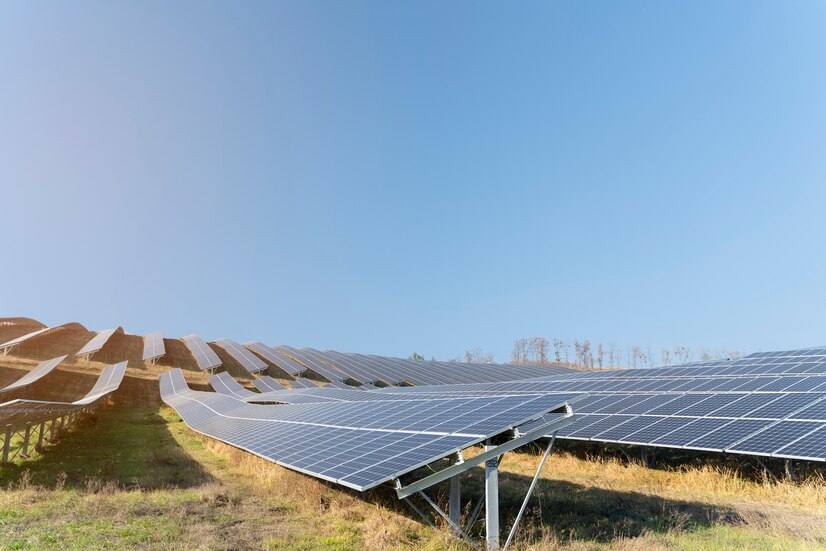In a generation where sustainability is increasingly becoming a focus, the highlight is shining brightly on sun electricity mills as a key player in revolutionizing power manufacturing.
Harnessing the certainly infinite energy of the sun, solar strength generators offer a easy, renewable, and inexhaustible source of strength, paving the manner towards a greater sustainable planet.
The Rise of Solar Energy Generators
The adoption of sun electricity turbines has surged in current years, pushed through technological advancements, falling prices, and developing environmental issues.
These generators, additionally known as solar photovoltaic (PV) structures, make use of sun panels to transform daylight into strength through the photovoltaic effect.
This method includes the absorption of photons via semiconductor materials inside the solar panels, generating a flow of electrons that may be harnessed as electrical power.
Advantages of Solar Energy Generators
One of the maximum compelling benefits of solar power turbines is their environmental friendliness.
Unlike conventional fossil fuel-based energy vegetation, solar strength turbines produce electricity without emitting greenhouse gasses or pollutants, thereby mitigating the damaging effects of climate exchange and air pollution.
Economic Viability and Long-Term Benefits
Beyond their environmental benefits, solar electricity generators also present sizable financial blessings. As the value of solar panels continues to decline and efficiency improves, solar strength has come to be increasingly aggressive with traditional power assets in phrases of value.
In many regions, sun strength is already cheaper than fossil fuels, making it an attractive option for residential and industrial applications.
Investing in solar energy
Furthermore, investing in solar energy generators can lead to long-term savings on strength payments, offering a reliable and predictable source of electricity over the device’s lifespan, which commonly ranges from 25 to 30 years.
Additionally, authorities incentives, along with tax credit and subsidies, in addition decorate the financial appeal of solar strength investments, accelerating the transition closer to renewable electricity.
Challenges and Future Outlook
While the adoption of solar power mills has been rapid, challenges remain, along with intermittency, power storage, and grid integration.
Solar energy generation is dependent on sunlight, which means that electricity manufacturing fluctuates in the course of the day and is unavailable at night time.
However, improvements in energy storage technologies, along with batteries, are addressing this challenge through enabling the storage of surplus sun strength for use at some point of intervals of low daylight.
Integration with Smart Grids
Solar energy mills are increasingly being included into smart grid systems, permitting bidirectional float of power and facilitating higher management of strength call for and supply.
This integration complements grid stability, reduces the chance of blackouts, and promotes a more green utilization of renewable electricity assets.
Job Creation and Economic Development
The fast enlargement of the solar energy industry has created jobs across diverse sectors, such as manufacturing, set up, protection, and research.
This increase not handiest contributes to neighborhood economies but additionally fosters innovation and abilities development in renewable power technologies.
Resilience to Energy Price Volatility
Solar power mills provide a hedge towards power rate volatility related to fossil fuels, as daylight is freely available and proof against geopolitical factors which could affect conventional electricity markets.
This stability in electricity fees blessings customers and companies alike, imparting lengthy-time period predictability and reducing reliance on imported fuels.
Community Empowerment and Energy Access
Solar power generators empower groups by providing access to smooth and reliable energy, especially in far off or underserved regions where grid infrastructure is confined or nonexistent.
Off-grid solar systems, which includes microgrids and solar domestic structures, provide a sustainable option to energy poverty, improving satisfaction of life and supporting financial improvement.
Climate Resilience and Adaptation
Solar electricity generators make a contribution to weather resilience by way of lowering greenhouse fuel emissions and mitigating the influences of climate change.
As intense climate occasions turn out to be extra common and severe, decentralized sun energy infrastructure complements resilience to disruptions in traditional power delivery chains, making sure perseveres get entry to electricity at some point of emergencies.
Educational and Awareness-Building Opportunities
The widespread adoption of solar strength turbines offers academic possibilities to elevate the focus of renewable energy technology and sell sustainable lifestyles.
Educational projects, along with sun strength workshops, college applications, and public outreach campaigns, foster a way of life of environmental stewardship and inspire future generations to embrace easy energy solutions.
Conclusion
In precision, sun electricity generators are revolutionizing power manufacturing with the aid of presenting several blessings, consisting of environmental sustainability, monetary viability, grid resilience, community empowerment, and academic opportunities.
As the sector transitions in the direction of a more sustainable strength destiny, sun strength will continue to play a pivotal function in shaping our planet’s power landscape for generations to come.










